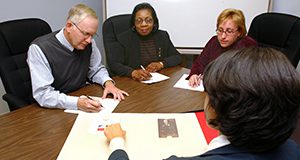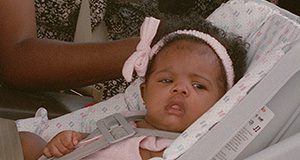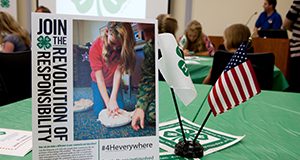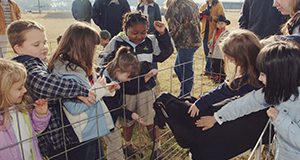Risk identification is the beginning point for risk management planning because solution identification begins with knowledge of the problem. This 4-page document presents questions to consider regarding production risk, price or market risk, financial risk, legal risk, and human risk. Written by Martie Gillen and Beatrice Pierre, and published by the UF/IFAS Department of Family, Youth and Community Sciences, August 2019.
http://edis.ifas.ufl.edu/fy1485
Category: Relationships
Assessing the Relationship between Supervisors and Employees
Relationship-based leadership is characterized by trust, respect, and mutual obligation that generates influence between parties. Within UF/IFAS Extension especially, many relationships between supervisors and employees are dynamic and multidimensional, characterized as both supervisory and collegial. Leader-Member Exchange Theory (LMX) is a relationship-based approach that explains leadership as an interaction between both leader and follower. In this new 4-page publication of the UF/IFAS Department of Agricultural Education and Communication, Matthew Benge presents the LMX-7, an assessment instrument to gauge the quality of relationship between supervisors and their employees.
http://edis.ifas.ufl.edu/wc332
Living with a College Roommate in a Residence Hall
As you enter college, you may wonder what it will be like to live in a residence hall and share a space with a roommate. A good roommate relationship can help you navigate many of the changes you are about to make. This new 2-page document discusses six steps you can take to help establish a good relationship between you and your roommate. Written by Suzanna Smith and Heather Wallace, and published by the UF/IFAS Department of Family, Youth and Community Sciences, February 2019.
http://edis.ifas.ufl.edu/fy1480
Feeding Your Baby
Feeding your baby is one of the first things you do as a parent. It is also one of the ways that you develop a relationship with this new family member. When feeding goes well, everyone in the family is happier. This 3-page publication can help you develop a close feeding relationship with your baby. The skills you learn will also help you and your child avoid conflicts over food during the toddler and preschool years. Written by Linda B. Bobroff and Nicole Owens Duffy, and published by the UF/IFAS Department of Family, Youth and Community Sciences, revised March 2019.
http://edis.ifas.ufl.edu/he964
Florida 4-H Community Pride Leader’s Guide
Service learning is an important component of youth development because it allows youth to strengthen their critical thinking skills, leadership skills, and civic and social responsibility. This 5-page Leader's Guide will help you and your club members get the most out of the Community Pride Program. Written by Stacey Ellison and Grace Carter, and published by the UF/IFAS 4-H Youth Development Department, January 2019.
http://edis.ifas.ufl.edu/4h396
Breast Cancer: When the Woman You Love Has Breast Cancer
For the person with breast cancer, a diagnosis causes her life to suddenly and dramatically change. As treatment progresses, the patient has a multitude of doctor visits, procedures, and often support groups to keep her busy and focused. Her partner's challenges are also significant, but unfortunately they are frequently overlooked. This 4-page fact sheet is the second document in a 12-part series on breast cancer. It provides perspectives and suggestions for persons who are accompanying a woman through breast cancer treatment. Written by Martha C. Monroe, Barbara F. Shea, and Linda B. Bobroff, and published by the UF/IFAS Department of Family, Youth and Community Sciences, revised April 2018.
http://edis.ifas.ufl.edu/fy896
Raising Healthy Children: Age Five
This publication is designed to give you some information about the social, mental, and physical development of your five-year-old child. This new 5-page fact sheet discusses nutrition, eating behaviors, healthy food options, cooking activities, and physical activity. Written by Claire Marie Fassett and Karla P. Shelnutt, and published by the UF/IFAS Department of Family, Youth and Community Sciences, January 2018.
http://edis.ifas.ufl.edu/fy1475
The Art of Goodbye: Communication Considerations
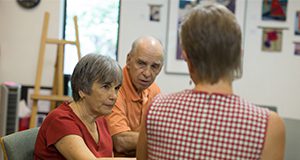 People are frequently at a loss for the best way to begin a discussion about end-of-life concerns with loved ones and health care providers and are also unsure of the topics they should cover. Nonetheless, conversations about end-of-life care and advance directives can help ensure that the person’s wishes are honored. These measures also eliminate much of the difficult decision-making that loved ones typically face at the time of their loved ones’ passing. This 5-page fact sheet, part of a new series entitled The Art of Goodbye, discusses the barriers to discussing the end of life and the process of communication with loved ones and health care providers. Written by Suzanna Smith, Lynda Spence, and Chelsea Tafelski, and published by the UF Department of Family, Youth and Community Sciences, October 2016.
People are frequently at a loss for the best way to begin a discussion about end-of-life concerns with loved ones and health care providers and are also unsure of the topics they should cover. Nonetheless, conversations about end-of-life care and advance directives can help ensure that the person’s wishes are honored. These measures also eliminate much of the difficult decision-making that loved ones typically face at the time of their loved ones’ passing. This 5-page fact sheet, part of a new series entitled The Art of Goodbye, discusses the barriers to discussing the end of life and the process of communication with loved ones and health care providers. Written by Suzanna Smith, Lynda Spence, and Chelsea Tafelski, and published by the UF Department of Family, Youth and Community Sciences, October 2016.
http://edis.ifas.ufl.edu/fy1470
The Art of Goodbye: Why People Are Talking About the End of Life
 Mortality has been a taboo subject for many years. Many cultural, demographic, educational, and policy changes have played a part in a shift toward an increased openness to talking about death as a natural part of life in the United States. This 5-page fact sheet is the first publication in a new series entitled The Art of Goodbye, and it covers changes in living and dying, preferences for the end of life, roles of substitute decision makers in health care, and communication. Written by Suzanna Smith and Lynda Spence, and published by the UF Department of Family, Youth and Community Sciences, October 2016.
Mortality has been a taboo subject for many years. Many cultural, demographic, educational, and policy changes have played a part in a shift toward an increased openness to talking about death as a natural part of life in the United States. This 5-page fact sheet is the first publication in a new series entitled The Art of Goodbye, and it covers changes in living and dying, preferences for the end of life, roles of substitute decision makers in health care, and communication. Written by Suzanna Smith and Lynda Spence, and published by the UF Department of Family, Youth and Community Sciences, October 2016.
http://edis.ifas.ufl.edu/fy1468
Grandparents Raising Grandchildren: Custody Options
 Grandparents have several custody options when they are caring for their grandchildren. To decide which options match your needs, you must become familiar with legal terms. This brochure provides information on custody options, situation scenarios, and legal resources. Written by Larry F. Forthun and Millie Ferrer-Chancy with assistance from the Legal Aid Foundation, and published by the UF Department of Family, Youth and Community Sciences. Revised December 2015.
Grandparents have several custody options when they are caring for their grandchildren. To decide which options match your needs, you must become familiar with legal terms. This brochure provides information on custody options, situation scenarios, and legal resources. Written by Larry F. Forthun and Millie Ferrer-Chancy with assistance from the Legal Aid Foundation, and published by the UF Department of Family, Youth and Community Sciences. Revised December 2015.
http://edis.ifas.ufl.edu/fy433
Breast Cancer: Preparing for Surgery
 Once you and your doctor schedule your breast cancer surgery, you may have additional questions about how you can prepare for your operation. This 5-page fact sheet provides information to help you get ready for breast cancer surgery through a brief overview of common surgical options, medical appointments, social support systems, and standard surgical procedures as well as reactions and memories of women who have gone through this experience. Written by Martha C. Monroe and Barbara F. Shea, and published by the UF Department of Family, Youth and Community Sciences. Revised February 2016.
Once you and your doctor schedule your breast cancer surgery, you may have additional questions about how you can prepare for your operation. This 5-page fact sheet provides information to help you get ready for breast cancer surgery through a brief overview of common surgical options, medical appointments, social support systems, and standard surgical procedures as well as reactions and memories of women who have gone through this experience. Written by Martha C. Monroe and Barbara F. Shea, and published by the UF Department of Family, Youth and Community Sciences. Revised February 2016.
http://edis.ifas.ufl.edu/fy899
Consejos para pleanear contra desastres para gente mayor
 FY1462 is the Spanish language version of FY620, Disaster Planning Tips for Older Adults. This 4-page publication offers an abundance of information pertaining to water storage and use, food, first aid, important papers, electronics, medical needs, stress reduction, and evacuation which can help older adults plan for natural disasters and other emergencies. Written by Carolyn Wilken, Linda B. Bobroff, and Emily Minton, and published by the Department of Family, Youth and Community Sciences, May 2003.
FY1462 is the Spanish language version of FY620, Disaster Planning Tips for Older Adults. This 4-page publication offers an abundance of information pertaining to water storage and use, food, first aid, important papers, electronics, medical needs, stress reduction, and evacuation which can help older adults plan for natural disasters and other emergencies. Written by Carolyn Wilken, Linda B. Bobroff, and Emily Minton, and published by the Department of Family, Youth and Community Sciences, May 2003.
http://edis.ifas.ufl.edu/fy1462
What Is Domestic Violence?
 Domestic violence can come in many forms and can happen to anyone. It is found all across the world and has a long-standing history in nearly every society. Domestic violence can present itself in many different ways, including sexual violence, physical violence, and emotional violence. In this 3-page fact sheet, we break down each of these types of abuse further to better understand what they really mean. Written by Kathleen Beall and Heidi Radunovich, and published by the UF Department of Family Youth and Community Sciences, December 2014. (Photo: iStock/Thinkstock.com)
Domestic violence can come in many forms and can happen to anyone. It is found all across the world and has a long-standing history in nearly every society. Domestic violence can present itself in many different ways, including sexual violence, physical violence, and emotional violence. In this 3-page fact sheet, we break down each of these types of abuse further to better understand what they really mean. Written by Kathleen Beall and Heidi Radunovich, and published by the UF Department of Family Youth and Community Sciences, December 2014. (Photo: iStock/Thinkstock.com)
http://edis.ifas.ufl.edu/fy1453
Reporting Domestic Violence in Florida
 Being in a violent relationship can be both a terrifying and hopeless experience. Likewise, the legal process can be both an extensive and complicated process. In this 2-page fact sheet, we address what to expect when reporting the violence to law enforcement. Written by Kathleen Beall and Heidi Radunovich, and published by the UF Department of Family Youth and Community Sciences, December 2014.
Being in a violent relationship can be both a terrifying and hopeless experience. Likewise, the legal process can be both an extensive and complicated process. In this 2-page fact sheet, we address what to expect when reporting the violence to law enforcement. Written by Kathleen Beall and Heidi Radunovich, and published by the UF Department of Family Youth and Community Sciences, December 2014.
http://edis.ifas.ufl.edu/fy1454
Filing a Restraining Order in Florida
 After a charge or arrest for domestic violence, the abuser may still find ways to cause harm. One of the most common threats faced after ending a violent relationship is stalking. Stalking is when someone repeatedly follows, harasses, or makes threats against you. Fortunately, there are laws and legal protections that can work to keep you safe if you are stalked. The first and often most powerful of these protections is filing an injunction. In this 3-page fact sheet, Kathleen Beall and Heidi Radunovich explore what an injunction is, how it is filed, and what it protects you against. Published by the UF Department of Family Youth and Community Sciences, December 2014. Photo: (iStock/Thinkstock.com)
After a charge or arrest for domestic violence, the abuser may still find ways to cause harm. One of the most common threats faced after ending a violent relationship is stalking. Stalking is when someone repeatedly follows, harasses, or makes threats against you. Fortunately, there are laws and legal protections that can work to keep you safe if you are stalked. The first and often most powerful of these protections is filing an injunction. In this 3-page fact sheet, Kathleen Beall and Heidi Radunovich explore what an injunction is, how it is filed, and what it protects you against. Published by the UF Department of Family Youth and Community Sciences, December 2014. Photo: (iStock/Thinkstock.com)
http://edis.ifas.ufl.edu/fy1455
Raising Healthy Children: Age Four
 As children continue their preschool years, they learn many new things and develop their own opinions and ideas. During this time, people inside and outside of the home may greatly influence them. As preschoolers continue to learn and grow, caregivers can take many steps to guide their children in a healthy and positive direction. This 4-page fact sheet was written by Kate Bennet, Gail Kauwell, and Karla P. Shelnutt, and published by the UF Department of Family Youth and Community Sciences, April 2014.
As children continue their preschool years, they learn many new things and develop their own opinions and ideas. During this time, people inside and outside of the home may greatly influence them. As preschoolers continue to learn and grow, caregivers can take many steps to guide their children in a healthy and positive direction. This 4-page fact sheet was written by Kate Bennet, Gail Kauwell, and Karla P. Shelnutt, and published by the UF Department of Family Youth and Community Sciences, April 2014.
http://edis.ifas.ufl.edu/fy1398
Women and Money: Unique Issues – So You Want to Remarry? (FCS7249/FY1353)
 Whether widowed or divorced, if a second marriage is in your future, it may be advisable to look before you leap. Second marriages have a higher failure rate than first marriages. They are often more complex and have stresses not found in many first marriages. Take your time to consider all of the financial circumstances between you and your future spouse before you remarry. This 3-page fact sheet was written by Diann Douglas, Martie Gillen, and Lynda Spence, and published by the UF Department of Family Youth and Community Sciences, March 2013.
Whether widowed or divorced, if a second marriage is in your future, it may be advisable to look before you leap. Second marriages have a higher failure rate than first marriages. They are often more complex and have stresses not found in many first marriages. Take your time to consider all of the financial circumstances between you and your future spouse before you remarry. This 3-page fact sheet was written by Diann Douglas, Martie Gillen, and Lynda Spence, and published by the UF Department of Family Youth and Community Sciences, March 2013.
http://edis.ifas.ufl.edu/fy1353
Promoting Healthy Relationship Development in Teens, Part II: Three Key Qualities to Foster Better Relationships (FCS2326/FY1364)
 Getting married and staying married require a complicated calculus of factors that must come together to produce healthy and satisfying relationships. While couple interactional processes tend to be the most predictive of whether or not they will stay together and find happiness, background and contextual factors and individual traits also factor heavily into the equation. Finding two socks that match (and don’t wear out) is much more likely to occur when the relationship is based upon a deep and enduring friendship. Asking the question, “Will this choice enhance or diminish my marital friendship?” and then choosing to make the choices that will enhance the marital friendship more often than not are healthy strategies for success. This 5-page fact sheet was written by Victor W. Harris, Gilon Marts, and Muthusami Kumaran, and published by the UF Department of Family Youth and Community Sciences, March 2013.
Getting married and staying married require a complicated calculus of factors that must come together to produce healthy and satisfying relationships. While couple interactional processes tend to be the most predictive of whether or not they will stay together and find happiness, background and contextual factors and individual traits also factor heavily into the equation. Finding two socks that match (and don’t wear out) is much more likely to occur when the relationship is based upon a deep and enduring friendship. Asking the question, “Will this choice enhance or diminish my marital friendship?” and then choosing to make the choices that will enhance the marital friendship more often than not are healthy strategies for success. This 5-page fact sheet was written by Victor W. Harris, Gilon Marts, and Muthusami Kumaran, and published by the UF Department of Family Youth and Community Sciences, March 2013.
http://edis.ifas.ufl.edu/fy1364
Kinship Caregivers: Understanding Children and the Military Deployment Cycle (FCS2330/FY1368)
 Deployment occurs in almost every branch of the military, and the experience differs for each family and each family member. To reflect the diversity of experiences, military professionals have proposed various models of the deployment cycle to assist families in the transition. There are at least five phases that are common across models: pre-deployment, deployment, sustainment, preparation (also known as redeployment), and reunification (or home-coming). Recognizing that each family is unique, this deployment cycle is intended not as a rule-book but as a helpful guide to families as they experience deployment of a parent. This 4-page fact sheet was written by Elizabeth Thomas and Larry F. Forthun, and published by the UF Department of Family Youth and Community Sciences, March 2013.
Deployment occurs in almost every branch of the military, and the experience differs for each family and each family member. To reflect the diversity of experiences, military professionals have proposed various models of the deployment cycle to assist families in the transition. There are at least five phases that are common across models: pre-deployment, deployment, sustainment, preparation (also known as redeployment), and reunification (or home-coming). Recognizing that each family is unique, this deployment cycle is intended not as a rule-book but as a helpful guide to families as they experience deployment of a parent. This 4-page fact sheet was written by Elizabeth Thomas and Larry F. Forthun, and published by the UF Department of Family Youth and Community Sciences, March 2013.
http://edis.ifas.ufl.edu/fy1368
Family Reunification Following Foster Care (FCS2328/FY1366)
 Families reuniting after an intervention that requires foster care for the children face unique challenges. Parents in these situations may need to learn about their parental roles, the basic needs for the healthy development of their children, and resources that will help the family in their reunification. Researchers and practitioners in child welfare have provided helpful information to develop workable plans to aid families in reunifying and rebuilding. This 5-page fact sheet is a brief summary of the overarching themes provided by the literature. Written by Rosalyn Monroe and Victor W. Harris, and published by the UF Department of Family Youth and Community Sciences, April 2013.
Families reuniting after an intervention that requires foster care for the children face unique challenges. Parents in these situations may need to learn about their parental roles, the basic needs for the healthy development of their children, and resources that will help the family in their reunification. Researchers and practitioners in child welfare have provided helpful information to develop workable plans to aid families in reunifying and rebuilding. This 5-page fact sheet is a brief summary of the overarching themes provided by the literature. Written by Rosalyn Monroe and Victor W. Harris, and published by the UF Department of Family Youth and Community Sciences, April 2013.
http://edis.ifas.ufl.edu/fy1366

